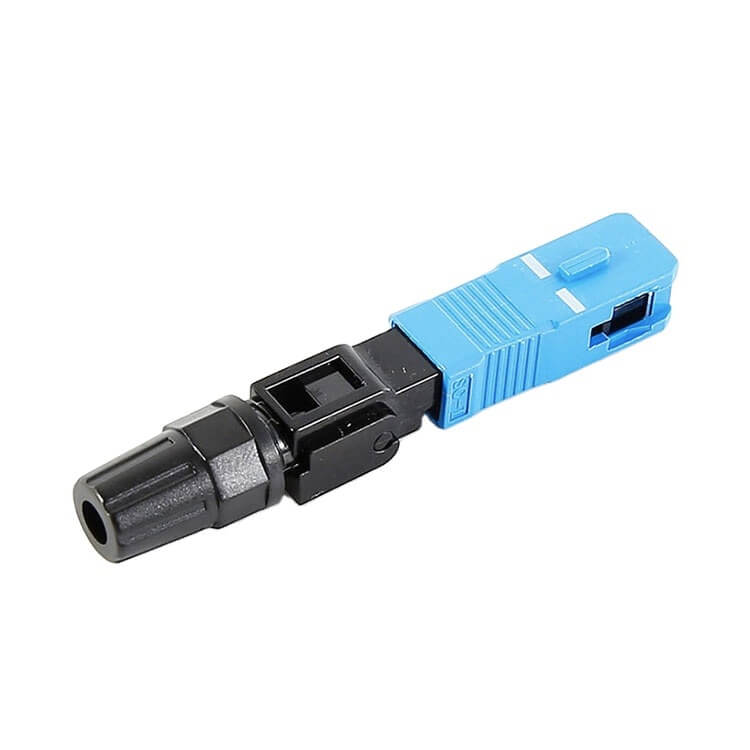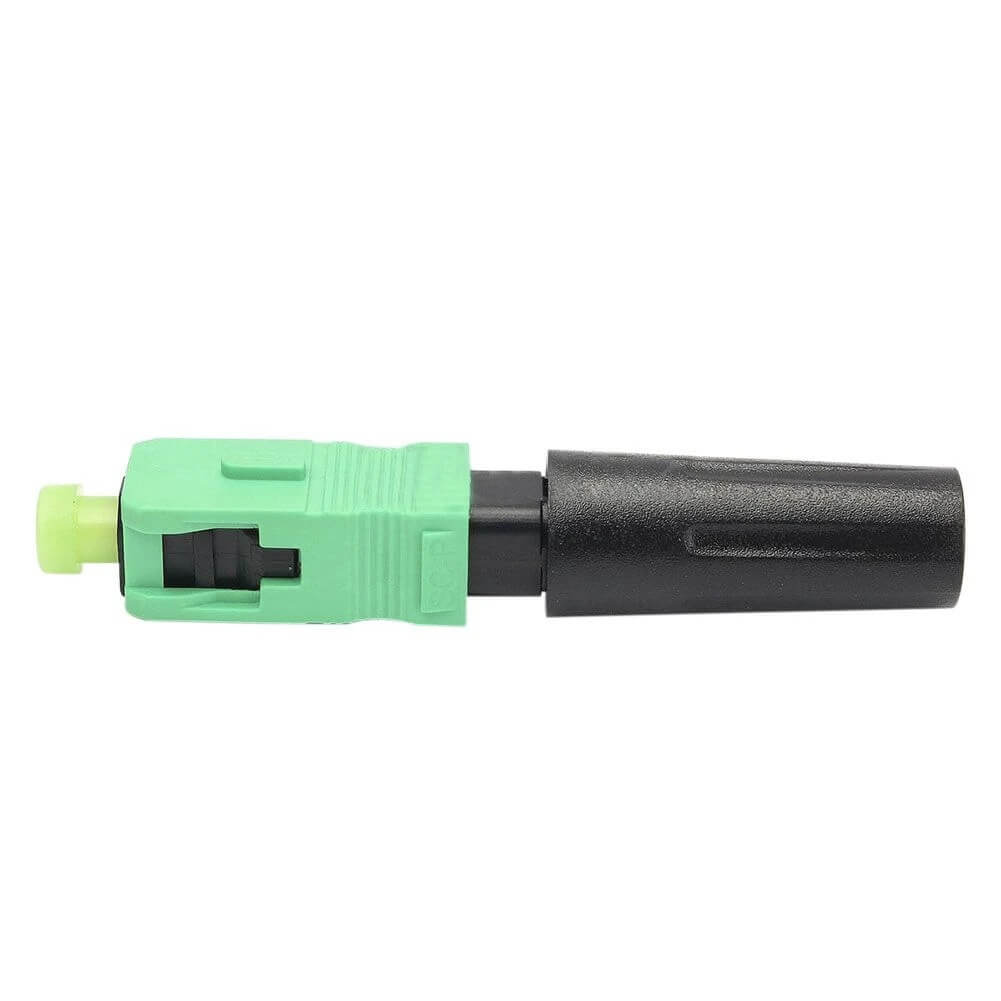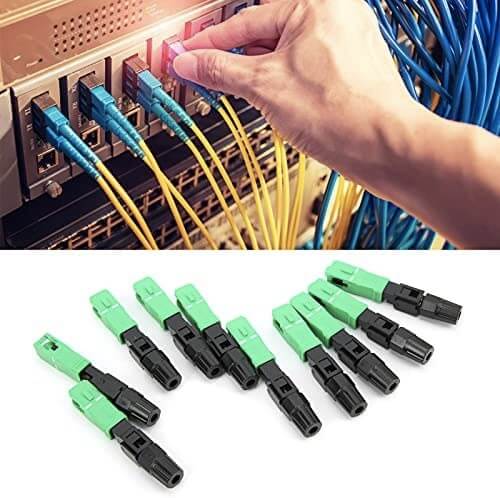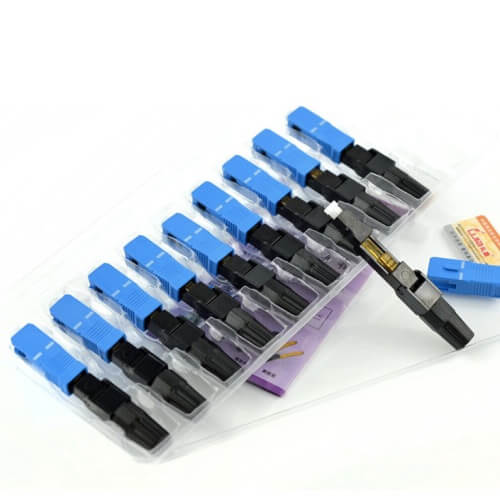What is Fast Fiber Optic Connector?
Fast fiber optic connector is also called quick connection in the industry, also known as field-assembled optical fiber active connector. This kind of connector is small in size and fast in termination. The basic termination process only takes 2 minutes. It has a wide range of applications, such as corridors and FTTH cables, which have a particularly high usage rate, so they are widely welcomed by the market. In this article, Bonelinks will briefly introduce the fiber optic fast connector.
Fiber Optic Fast Connectors Types
Fiber optic fast connectors are also called fiber optic field connectors or pre-terminated connectors. They are divided into straight-through and embedded connectors. Their main differences are as follows.
- Straight-through Connectors
It mainly belongs to the dry structure. This structure is very simple, and its advantage is that it is easy to realize and low in cost. But there are many disadvantages, such as strict requirements on the diameter of the fiber, strict requirements on the cutting end face and cutting length, and stricter requirements on the strength of the clamping. Otherwise, any mismatch with the product will cause fluctuations in parameters. In addition, since the return loss index is completely dependent on the condition of the cut end face of the optical fiber, the return loss index of the product is relatively poor, and the operator’s proficiency is highly required.
This type of product structure can be applied to emergency repair of temporary optical fiber links, but it is not suitable for large-scale use of FTTH access links.

- Pre-embedded Optical Fiber Fast Connector
It belongs to the pre-embedded fiber structure. The pre-embedded fiber structure uses a piece of bare fiber pre-placed in the ceramic ferrule in the factory, and the top end is ground, and the operator only needs to cut the other end of the fiber and insert it on site.
Since the pre-embedded fiber is factory-ground in front of the pre-embedded structure and the butt joint is filled with matching liquid, it does not rely too much on the flatness of the fiber end face cut, which greatly reduces the requirements for operator proficiency.
Since the end face of the connector is pre-polished, the return loss index is good. This product structure can achieve better insertion loss (below 0.5dB) and return loss (above 45dB) indicators, and the reliability and stability are relatively high, so it is suitable for indoor nodes of FTTH access links.

Fiber optic fast connectors are flexible and convenient to use. Of course, there are many types of optical fiber fast connectors, and different types of optical fiber fast connectors have different materials, performance, low stability, and service life.
Advantages
- Field Installable and Flexible Wiring
There are many scattered fiber optic wiring projects for FTTx user terminals, and the on-site construction environment is complex and diverse. Fast and reliable fiber termination is required to ensure low-cost and high-efficiency fiber optic network construction. Fast connectors increase the flexibility of FTTH network optical wiring design. The optical fiber can be quickly and easily terminated on site, and the simple assembly process facilitates assembly and flexible wiring. Fiber optic quick connectors have been widely used in optical power distribution cabinets, optical testers and optical transmission networks. - High Performance and High Reliability
The optical fiber fast connector is pre-embedded with single-mode optical fiber, and the end of the connector is pre-polished in the factory, without grinding and gluing at the construction site, so as to ensure the quality of the end face of the connector and good reflection performance. It utilizes precision and high quality ceramic ferrules to provide a highly reliable connection in most network applications. - Easy Installation
The fast connector is a field-assembled optical fiber connector. It only needs to use a simple splicing tool to realize the direct termination of the fiber optic cable. During the assembly process, there is no need for glue injection, grinding, and welding. It is easy to use and easy to operate.

Application
Fiber optic fast connector is widely used where a quick connection is required, providing fast assembly and stable performance. The construction tools are simple and convenient, with no need for a power supply, easy to operate, which greatly improves construction efficiency and reduces labor costs. It is widely used in fiber optic interconnections, such as telecom distribution, FTTH and FTTx, passive optical networks (ATM, WDM, Ethernet), broadband, cable TV (CATV), etc.
How to Install and Use Fiber Optic Fast Connector?
- Remove the connector tail cover and pass the cable through it;
- Use fiber optic strippers to peel off the outer sheath of the cable, and the length is about 5CM;
- Put the Miller pliers close to the edge of the fixture and cut off the exposed coating layer to expose the optical fiber;
- Wipe and clean the bare optical fiber with a dustproof cloth;
- Cut the optical fiber with a jig;
- Align the optical fiber with the groove of the main body and insert it. When the optical fiber is initially bent, press down the crimping cover;
- Screw the end cap attached to the cable back to the main body of the connector and then buckle the shell.
The above is the introduction of the optical fast connector, Bonelinks hope it will be helpful to you.




